AI, in the ecommerce context, operates as a force multiplier, amplifying the capabilities of businesses in unprecedented ways. Far from being a mere technological trend, AI has emerged as a formidable and indispensable catalyst, profoundly reshaping the strategies and operations of businesses, transforming customer engagement, and propelling exponential growth.
The integration of AI technologies into the fabric of ecommerce is not just a passing trend; it has evolved into an absolute necessity. In a landscape characterized by relentless competition and swiftly changing consumer expectations, businesses that embrace AI gain a pivotal edge in navigating the complexities of the digital marketplace. AI is not merely a tool; it is a transformative force that holds the potential to redefine how businesses operate and set new standards for customer experiences
Benefits of AI in Ecommerce:
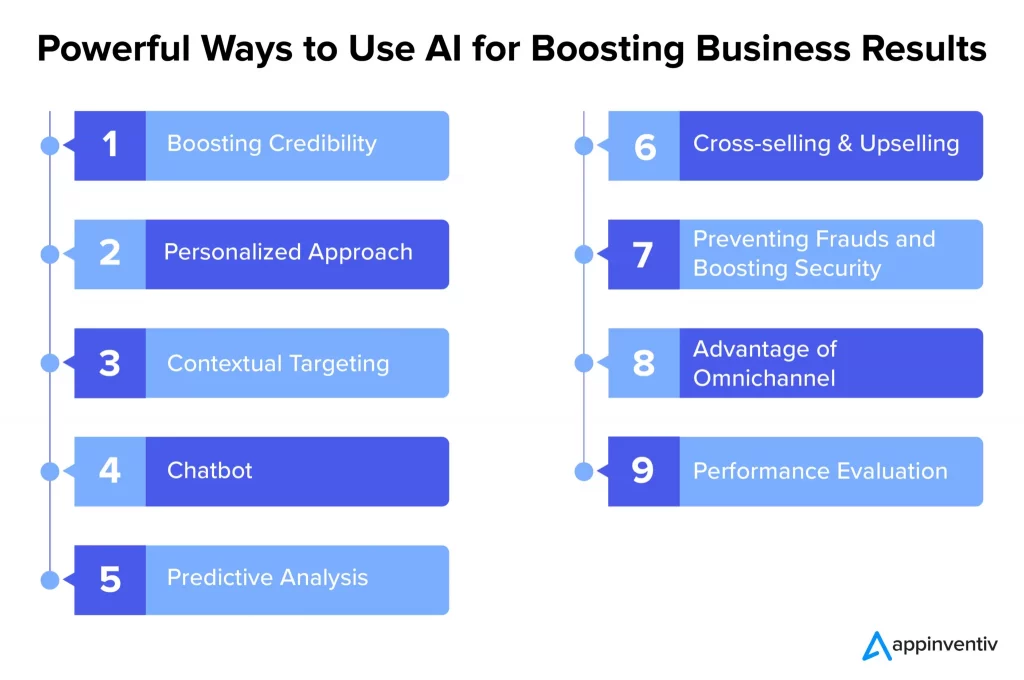
- Voice Commerce and Virtual Assistants: eCommerce Virtual Assistants (VAs), powered by language processing and machine learning, exemplify the evolution of customer support. Popularized by platforms like Google Assistant, Amazon’s Alexa, and Apple’s Siri, VAs are available 24/7, handling queries seamlessly. From product research to inventory management, VAs enhance scalability and offer customers quick and easy access to information, exemplifying the prowess of AI in enhancing customer interactions.
- Smart Search: Smart search, often termed “searchandizing,” addresses the challenge of helping customers find their desired products efficiently. Combining merchandising techniques with advanced search features like faceted search, autocomplete, and recommended product listings, smart search optimizes the user experience. AI-driven image annotation further enhances search accuracy, providing personalized and user-friendly experiences based on behavioral data.
- Personalization: AI-driven personalization transforms the eCommerce shopping experience by tailoring content based on individual customer preferences. Whether displaying recently viewed products, orchestrating automated email campaigns, or curating personalized product lists, AI optimizes the entire customer journey. Real-time analytics enable eCommerce stores to offer personalized recommendations, leading to increased customer engagement and impulse purchases.
- Automation: With the proliferation of online stores across various channels, automation becomes imperative for efficient operations. AI-driven automation streamlines both front and back-end workflows, allowing eCommerce businesses to manage repetitive tasks effortlessly. From product feature placements to sales synchronization and risk identification, AI automation optimizes efficiency, saving time and resources for business owners.
- Remarketing to Potential Prospects: Remarketing, a strategic reminder to the target audience about an eCommerce brand and its offerings, gains efficacy through AI. This approach targets users who have previously visited the website or made purchases. AI algorithms analyze customer behavior, enabling businesses to implement personalized remarketing strategies. By retargeting potential prospects with tailored messages, eCommerce businesses can maximize brand recall and encourage completion of the purchasing journey.
Strategies to Implement AI in Ecommerce:
1. Enable Personalization for Enhanced Shopping Experiences
Utilizing AI-powered tools such as customer behavior tracking software, recommendation engines, and data analytics platforms, ecommerce businesses can deeply understand their customers’ preferences and behaviors. Tools like Google Analytics, Mixpanel, or Kissmetrics enable the collection and analysis of data related to browsing history, purchase patterns, and interactions on the website.
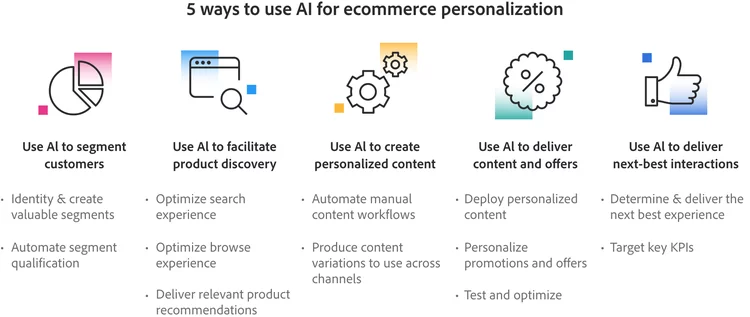
By integrating these tools, businesses gain valuable insights into:
- Behavioral Patterns: Understanding how customers navigate the site, what they search for, and the products they view most frequently.
- Purchase History Analysis: Identifying past purchases and discerning trends in buying habits or product preferences.
- Segmentation and Targeting: Grouping customers based on preferences, demographics, and behavior to provide more targeted and personalized recommendations.
These insights allow for personalized recommendations, tailored email campaigns, and on-site experiences customized for each user. By employing Customer Relationship Management (CRM) tools like Salesforce or HubSpot, businesses can manage customer interactions and data, further enhancing personalization efforts. Implementing dynamic content creation tools like Optimizely or Dynamic Yield enables the real-time customization of website content based on user behavior.
2. Provide Product Recommendations through AI-driven Visual Search
AI-powered visual search tools like Clarifai, TinEye, or Google Vision AI analyze images to identify patterns, shapes, colors, and textures. These tools use machine learning algorithms to understand visual data and make product recommendations accordingly.
Here are examples of how these tools can be utilized across various industries:
- Fashion Retailers: Use visual search to suggest clothing items that match or complement an uploaded image of an outfit. Tools can recognize patterns, colors, and styles to offer relevant clothing suggestions.
- Furniture Stores: Recommend products that suit a specific room setting based on images provided by customers. These tools can identify furniture shapes, colors, and styles to suggest complementary pieces.
- Beauty Brands: Offer personalized makeup recommendations based on customers’ selfies. Visual search can analyze skin tones, facial features, and makeup styles to suggest suitable products.

3. Employ an AI-Powered Chatbot for Improved Customer Service
Customer service is a cornerstone for success, and AI-powered chatbots have emerged as a game-changer. These intelligent bots, equipped with Natural Language Processing (NLP) capabilities, serve as virtual assistants, providing instantaneous and tailored support to customers. They understand and respond to voice-based queries, offering personalized solutions and product recommendations based on individual preferences. The key advantage lies in their availability round the clock, eliminating wait times and providing immediate assistance.

Take the case of Amtrak, the US-based passenger railroad service. Amtrak employs an AI-powered chatbot named “Julie” to assist customers with booking tickets, finding train schedules, and answering frequently asked questions. Julie is accessible through various channels, including the Amtrak website and mobile app. This chatbot significantly enhances the customer experience by swiftly addressing queries and simplifying the ticket booking process.
4. Optimize Inventory Management Using Predictive Analytics
Inventory management is a critical aspect of ecommerce operations. AI-driven predictive analytics revolutionizes this process by harnessing advanced algorithms and comprehensive data analysis. By scrutinizing historical sales data, customer purchasing behaviors, and external factors such as seasonal trends or market fluctuations, predictive analytics forecasts future product demand accurately. This foresight enables businesses to optimize stock levels, preventing overstocking or shortages, thereby improving operational efficiency and reducing costs.
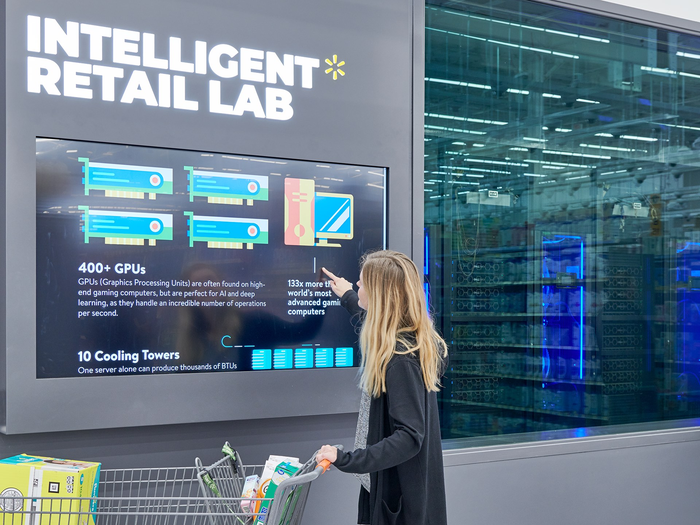
Consider Walmart, a global retail giant. Walmart utilizes AI-powered predictive analytics to forecast product demand across its vast network of stores. By analyzing various data points, including sales history, weather patterns, and economic indicators, Walmart predicts demand with precision. This enables the company to optimize inventory levels, ensuring products are available when needed while minimizing excess stock.
Learn about AI in inventory management here.
5. Increase Efficiency of Logistics Operations
Efficient logistics operations are indispensable for seamless ecommerce experiences. Artificial Intelligence (AI) plays a pivotal role in this realm by implementing proactive maintenance on packaging machinery, reducing downtime, and enhancing operational continuity. Moreover, AI-driven tools leverage machine learning algorithms to identify inefficiencies or bottlenecks within the supply chain network. By analyzing data from multiple sources, these tools optimize processes, streamline decision-making, and facilitate timely deliveries, ultimately boosting customer satisfaction.

DHL, a global logistics company, integrates AI into its operations to streamline and optimize logistics processes. DHL utilizes AI algorithms to analyze vast amounts of data related to shipping routes, weather conditions, and delivery times. This data-driven approach enables DHL to optimize delivery routes, improve shipment handling, and ensure timely deliveries, contributing significantly to their reputation for reliability in the logistics industry.
6. Generate Sales Copy Quickly and Efficiently
AI-powered writing tools have revolutionized the creation of sales copy by swiftly generating content, minimizing writer’s block, and reducing the time required for copy creation. These advanced algorithms, employed in AI writing tools, can produce multiple versions of sales copy in a matter of seconds, often requiring minimal editing by human writers. They function by interpreting prompts provided by users, generating a variety of text outputs that can be chosen from or used as a starting point for further refinement.
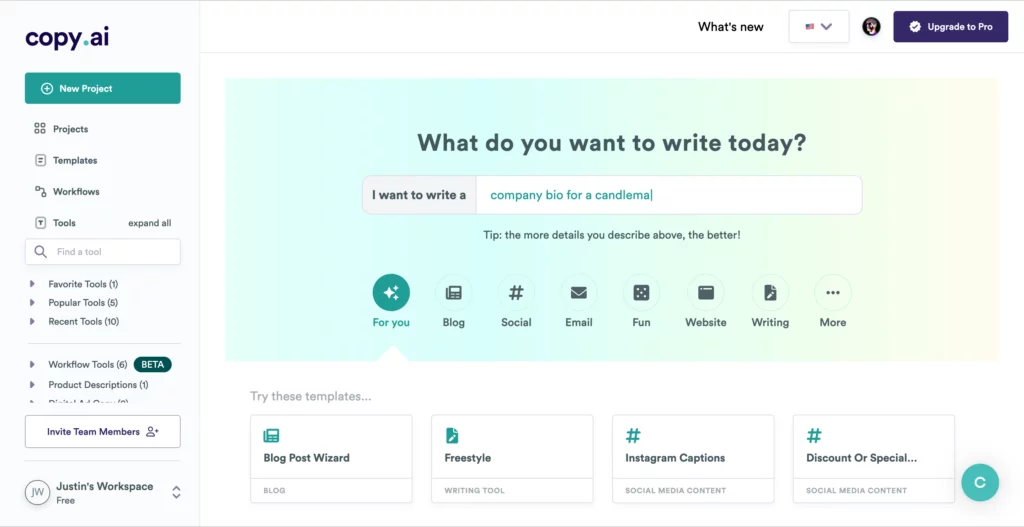
An excellent illustration of this is Copy.ai, an AI-powered copywriting tool. Copy.ai allows users to input prompts for various types of content, such as Google Ad copy, social media posts, or product descriptions. The tool swiftly generates multiple versions of text, providing marketers with options to select the most suitable copy for their marketing campaigns, thereby streamlining the content creation process.
7. Create and Enhance Images
AI image tools have democratized image creation by enabling users to produce various visuals without the need for extensive design skills or high costs. These tools offer functionalities to generate and enhance images swiftly. For instance, AI-powered platforms like Canva assist in producing images based on simple inputs, such as keywords or phrases, allowing users to create compelling visuals effortlessly.

Canva, a widely-used graphic design platform, incorporates AI technology to aid users in creating visuals. With minimal input, such as a phrase like “happy shopper,” Canva generates imagery. Moreover, AI-driven image editing tools like those used in Photoshop can perform advanced tasks like background removal, enabling users to create professional-looking visuals without complex editing techniques.
8. Rapidly Design Your Next Logo
AI tools for logo design expedite the process of creating brand identities. These tools swiftly generate logo prototypes based on user-provided inputs or preferences. By leveraging AI algorithms, users can explore a myriad of logo designs and concepts, even if they don’t have a specific idea in mind initially.

Midjourney is an example of an AI-powered logo creation tool. Users can input preferences such as colors, themes, or styles, and the tool generates logo mockups accordingly. This accelerates the logo design process and offers multiple options for users to choose from or further customize.
9. Prevent Abandoned Carts through Targeted Remarketing Campaigns
AI-driven remarketing campaigns combat the challenge of abandoned shopping carts in ecommerce. These campaigns target users who have abandoned their carts with personalized advertisements and incentives. By analyzing user behavior and purchase patterns, AI algorithms tailor ads to entice users back to complete their transactions, thereby reducing cart abandonment rates.
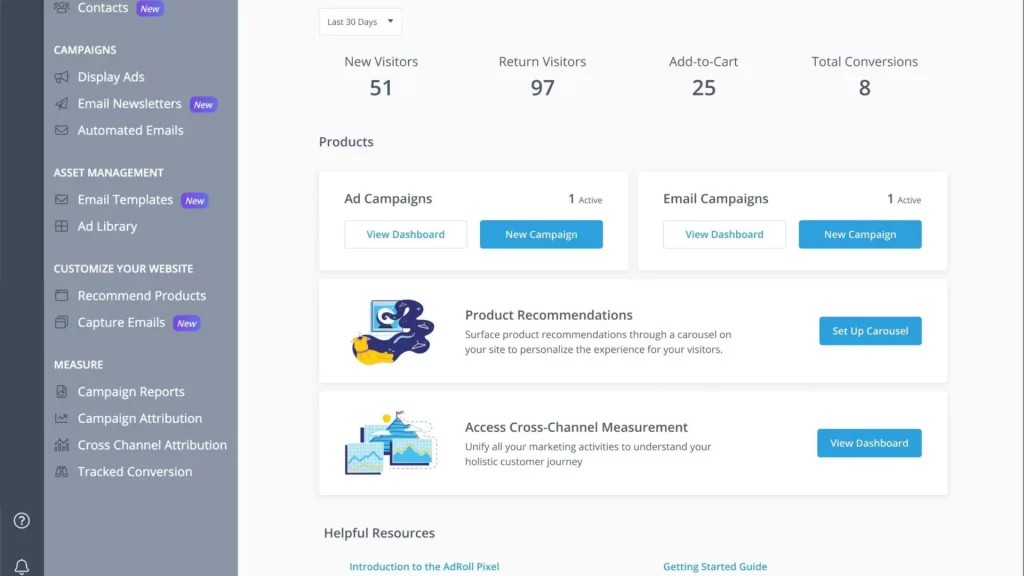
AdRoll, a digital marketing platform, employs AI-powered remarketing campaigns to retarget users who have abandoned their carts. By utilizing browsing history and user data, AdRoll creates personalized ads and promotions to encourage users to return to the website and finalize their purchases. This targeted approach enhances the chances of conversion and decreases cart abandonment rates significantly.
10. Tailor Content and Advertising Messages Using AI-Driven Insights
Machine learning algorithms analyze vast datasets encompassing user behaviors, browsing patterns, and purchasing history. By scrutinizing this data, AI discerns trends and predicts customer interests, facilitating the delivery of highly personalized marketing materials. For instance, AI algorithms might suggest products akin to those previously bought or viewed by a shopper, enhancing relevance and engagement.

Netflix, a leading streaming platform, utilizes AI extensively to personalize content recommendations. The platform employs algorithms that analyze user viewing history, preferences, and behavior to suggest movies and shows tailored to each user. This AI-driven recommendation system significantly enhances user engagement and retention by presenting content highly likely to be of interest to individual users.
11. Automate Cash Reporting and Forecasting
Cash flow management is crucial for any ecommerce business. AI-driven cash management platforms streamline this process by integrating machine learning with bank APIs to aggregate and standardize data from multiple bank accounts. This automation saves time and provides real-time insights into an organization’s liquidity across various business units, currencies, and accounts. Moreover, machine learning helps categorize cash inflows and outflows, enabling finance teams to generate accurate cash forecasts and conduct scenario planning and variance analysis.
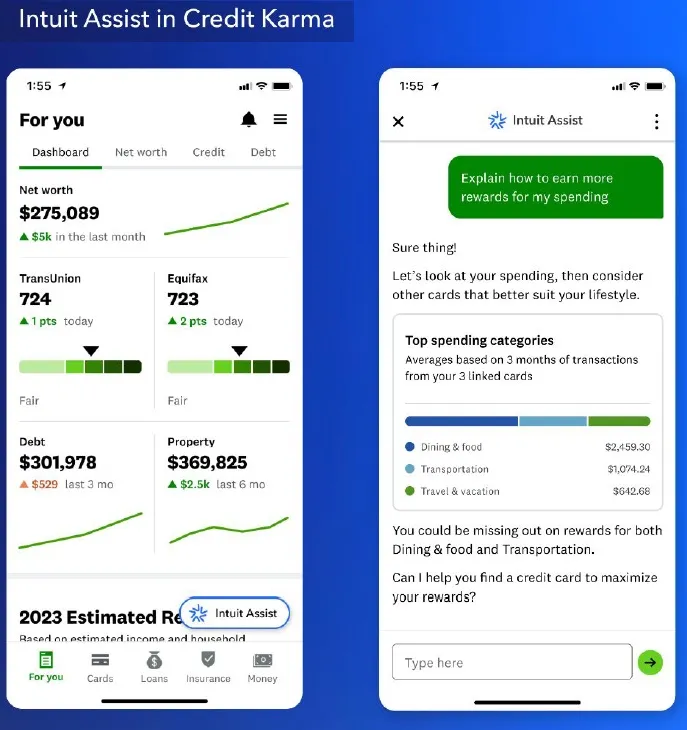
Intuit’s QuickBooks is an example of an AI-powered financial management platform. QuickBooks utilizes AI algorithms to automate cash reporting and forecasting. It integrates with various banks, aggregating and organizing financial data in real-time. The platform uses machine learning to categorize transactions and forecast cash flow, aiding businesses in making informed financial decisions and planning for different scenarios.
12. Automatically Reconcile Invoices
AI, particularly Natural Language Processing (NLP), can streamline invoice reconciliation processes. AI-powered systems match invoices from ERP systems with bank transactions, ensuring accuracy and preventing erroneous payments for undelivered services or products. By automating this reconciliation process, AI minimizes manual efforts, enhances accuracy, and mitigates the risk of financial discrepancies.
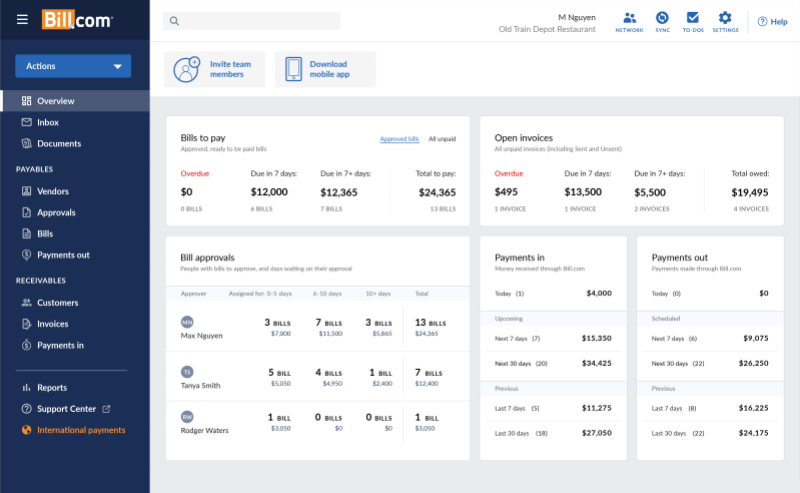
Bill.com is an example of an AI-driven platform that automates invoice reconciliation. Using NLP, Bill.com matches invoices with corresponding bank transactions, simplifying the reconciliation process. It extracts relevant information from invoices, cross-referencing it with financial data, and helps businesses reconcile invoices efficiently and accurately.
Conclusion:
As the digital marketplace becomes increasingly saturated, staying competitive requires more than just traditional business models. It demands an adaptive approach, and AI has become the linchpin for businesses striving not only to survive but to thrive. The strategic infusion of AI is not a luxury but a fundamental requirement for those who seek to remain agile and relevant in the face of relentless digital transformation.
FAQs on AI in Ecommerce:
Can AI be integrated into existing ecommerce platforms, or is it a standalone solution?
AI can be integrated into existing ecommerce platforms. Many AI solutions offer compatibility and integration options, allowing businesses to enhance their current systems without major overhauls.
What role does AI play in fraud detection and security for ecommerce businesses?
AI plays a crucial role in fraud detection by analyzing patterns, anomalies, and user behavior to identify potential threats. It enhances the security of ecommerce transactions and protects businesses and customers from fraudulent activities.
How does AI-powered personalization impact conversion rates in ecommerce?
AI-powered personalization tailors product recommendations, content, and promotions to individual customer preferences, significantly improving conversion rates. Customers are more likely to make purchases when presented with relevant and personalized offerings.
Are there ethical considerations in the use of AI in ecommerce, especially regarding customer data and privacy?
Ethical considerations are paramount in AI implementation. Businesses must prioritize customer data privacy, transparency in AI algorithms, and comply with regulations. Striking a balance between personalization and privacy is essential for responsible AI use in ecommerce.



